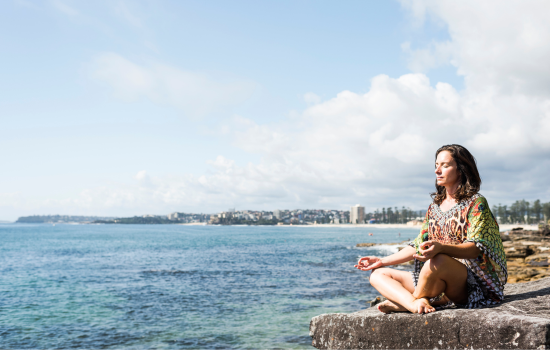Summer vacation—a time for rest, eagerly anticipated by many. Firstly – for teachers, the summer break offers the perfect opportunity to integrate mindfulness practices into daily life. After a demanding school year, summer provides a unique chance to focus on awareness, breathing, and relaxation, helping to recharge and prepare for the new school year in September.
Moreover, mindfulness offers an effective way to reduce stress, allowing teachers to rest and rejuvenate. By practicing mindfulness during the summer, teachers can cultivate emotional resilience, better preparing them for the upcoming challenges in the classroom.
What Is Mindfulness for Teachers?
Mindfulness is the practice of focusing attention on the present moment in an accepting and non-judgmental way.* In practice, this means consistently returning to the “here and now” with calmness and kindness. It’s about not dwelling on fleeting experiences such as thoughts, emotions, physical sensations, or impulses. Mindfulness encourages slowing down, an art that’s difficult but necessary.
Therefore, summer offers the perfect opportunity to develop this skill since it provides more time to slow down and reflect. Research suggests it takes about eight weeks to form a new habit—making summer the ideal time to deepen mindfulness practices. Thus, it’s the perfect moment to prioritize yourself and your emotions without stress or pressure. Cultivating mindfulness is not just a method of relaxation, but also a tool for improving overall mental health, especially for those working in high-pressure environments like education.
Mindfulness for Teachers: Benefits and Practices
Mindfulness exercises often use “anchors”—things you focus on to enhance concentration. Anchoring means directing your attention to something like your breath, body, or senses. When distractions arise (which is completely normal), mindfulness helps you recognize them and refocus your attention.
Consequently, these exercises help you strengthen your ability to stay present and mindful. By regularly practicing these exercises, teachers can gain better control over their reactions to stressful situations, leading to improved emotional well-being. It’s a skill that can be beneficial not only during the summer but throughout the year.
How Teachers Can Practice Mindfulness
1. Being Present in the Moment
A core mindfulness practice is focusing on the body and its sensations. When we disconnect from our bodies, we miss valuable signals about our emotions and well-being. Paying attention to our physical state helps ground us in the present. Moreover, it can help reduce physical tension accumulated during stressful times.
Practice:
- Lie down comfortably and notice which parts of your body are touching the ground and which aren’t.
- Take a few deep breaths and observe how your body reacts with each inhalation and exhalation.
- Slowly guide your attention from your feet to the top of your head. What do you notice? Are there external sensations (e.g., clothing) or internal sensations (e.g., tingling)?
- If your thoughts wander, gently bring them back to the body.
- Reflect on how often your mind wandered. Were there areas of tension in your body? How did you feel afterward? This practice is excellent for clearing mental clutter and returning to the present moment.
2. Mindful Breathing
Breathing is an easy-to-access anchor, yet it’s often overlooked. This summer, dedicate time to focus on your breath:
Practice:
- Sit comfortably, take a few deep breaths in and out, and let your body relax.
- Breathe in slowly through your nose and out through your mouth, paying attention to the process.
- Place your hands on your stomach and notice how it rises with each inhale and falls with each exhale.
- Spend 2-3 minutes focusing solely on your breath.
- Afterward, reflect on how you feel. Was it easy to focus on your breath? What distracted you, and what helped you regain your attention? This exercise helps foster a greater connection with your inner self and promotes deeper relaxation.
3. A Mindfulness Walk
Take a longer mindfulness practice with a walk. During your next walk, focus your attention on the movement and/or senses. This activity can be an excellent way to combine physical movement with mental clarity. By paying attention to every step, you’ll feel more connected to your surroundings.
Practice:
- Turn off your phone and leave your headphones behind.
- Walk slowly, paying attention to how your feet feel as they connect with the ground. Notice the movement of your legs, arms, torso, and head.
- Gradually increase your pace while remaining aware of every step, your body’s movements, and your breath.
- As you walk, look around. What stands out? Do you notice any smells or sounds? What colors dominate your surroundings—perhaps the green of the grass or the blue sky?
- Reflect on how you felt during this walk. Did you notice anything new, even though you’ve walked there many times before? Being fully present in your environment allows for greater appreciation of the world around you.
Consistency is key—return to these mindfulness practices as often as needed to establish healthy habits. In addition, these exercises can be done anywhere, making them convenient and accessible. By regularly practicing mindfulness, teachers can develop a greater sense of well-being and peace that lasts long beyond the summer.
Drops of Mindfulness
For more resources on mindfulness, explore the materials offered by the School with Class Foundation and the Edumind Foundation as part of the Drops of Mindfulness program: (S)pokój nauczycielski (Teacher’s Peace of Mind) and the e-learning course Teacher’s Peace of Mind. Mindfulness at school. Those are excellent tools for enhancing mindfulness practices.
You can also purchase Drops of Mindfulness cards in our online shop to help integrate mindfulness into your daily routine. These cards offer practical tips for staying mindful throughout the day, even during the busiest of school years.
This summer, take some time for yourself, prioritize your well-being, and enjoy a mindful break before the school year begins. We wish you a peaceful, restorative summer vacation!
Author: Anna Nowacka, psychologist, coordinator of the Drops of Mindfulness and School of Wellbeing program.
